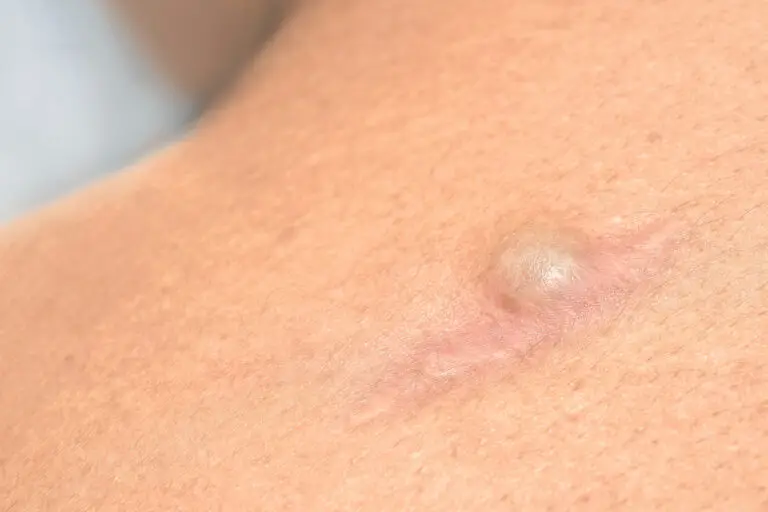Pilonidal disease

Expert Surgical Treatment for Pilonidal Disease
What is Pilonidal Disease?
Pilonidal disease is a common skin condition that affects the gluteal cleft (the buttock crease). It occurs when small midline pits or openings trap loose hairs, sweat, and debris, leading to inflammation and infection beneath the skin. If left untreated, pilonidal disease can develop into a painful abscess, a chronic draining wound, or recurrent infections, significantly impacting daily life.
The condition most commonly affects adolescents and young adults, particularly men and individuals with coarse body hair. It was historically known as “Jeep driver’s disease” during World War II due to its high prevalence among soldiers who spent extended hours sitting. Today, pilonidal disease remains common among individuals with sedentary lifestyles, including truck drivers, office workers, and students.
At Upper Edge Surgery, Dr. Goutham specialises in personalised pilonidal disease treatment, offering both minimally invasive procedures and advanced surgical techniques to provide long-term relief and prevent recurrence.
What Causes Pilonidal Disease?
The exact cause of pilonidal disease is not fully understood, but certain factors increase the risk of developing it. These include:
- Prolonged Sitting – Spending long hours sitting (e.g., truck drivers, office workers) increases pressure on the gluteal cleft, promoting hair and debris accumulation.
- Excessive Body Hair – Coarse or thick hair in the buttock region can become trapped in the skin, leading to inflammation.
- Skin Moisture & Friction – Sweating and rubbing of the skin can weaken the natural barrier, making infections more likely.
- Obesity – Extra body weight increases skin folds, creating an environment for pilonidal disease to develop.
- Hormonal Changes in Adolescence – Increased oil production and hair growth during puberty contribute to the onset of pilonidal disease.
Although some cases resolve with age, many individuals experience chronic symptoms requiring medical or surgical treatment.
Signs & Symptoms of Pilonidal Disease
Pilonidal disease can present in different forms, ranging from mild discomfort to severe infection. Symptoms include:
- Pain and tenderness in the buttock crease, especially when sitting or moving.
- Swelling or a lump in the lower back near the tailbone.
- Redness and warmth around the affected area.
- Pus or bloody discharge from an opening in the skin (indicating an infected sinus).
- Foul-smelling drainage from an abscess.
- Fever and fatigue in severe cases, signaling a deep infection.
If you experience persistent or recurring symptoms, it is essential to seek timely medical care to prevent complications.
Treatment Options for Pilonidal Disease
The best treatment approach depends on the severity of the condition and whether it is acute (infected abscess) or chronic (persistent sinus tracts).
1. Pilonidal Abscess Drainage (Acute Infection Treatment)
A pilonidal abscess is a painful, swollen lump filled with pus, requiring urgent treatment. The preferred approach is:
- Incision & Drainage (I&D) – A small cut is made to release the infection, reducing pain and swelling.
- No packing required – Unlike older techniques, modern approaches allow the wound to heal naturally without daily dressing changes.
- Healing time – The wound usually heals within a few weeks, but further surgical treatment may be needed to prevent recurrence.
If you have experienced multiple abscesses, surgical treatment for long-term resolution may be recommended.
2. Surgical Treatment for Pilonidal Disease (Chronic or Recurrent Cases)
For patients with persistent pilonidal sinuses, surgical intervention is often the best solution. Dr. Goutham offers tailored surgical techniques to minimize recurrence and improve healing outcomes.
A. Excision with or without Skin Closure
- Traditional Excision – The affected area is completely removed, eliminating infected tissue and sinus tracts.
- Open Healing – In some cases, the wound is left open to heal naturally, reducing recurrence risk but requiring longer healing time.
- Flap Closure (Karydakis Flap) – Advanced reconstructive techniques that close the wound using a rotated skin flap, reducing tension and promoting faster healing. This approach significantly lowers recurrence rates compared to traditional excision alone.
This method is highly effective for severe or recurrent pilonidal disease and is recommended for patients who have previously failed other treatments.
B. Minimally Invasive “Pit-Picking” Surgery
For mild to moderate cases, minimally invasive pit-picking surgery offers a quicker recovery and less post-operative discomfort.
- Small keyhole incisions are made to remove hair and debris from the sinus tracts.
- The openings are partially closed, allowing for natural healing while minimising wound size.
- Less downtime – Patients can return to work and daily activities sooner compared to traditional excision.
This technique is an excellent option for patients seeking a less invasive approach with minimal scarring and faster recovery.
Post-Surgical Care & Recovery
After pilonidal surgery, proper wound care is essential to prevent recurrence and ensure smooth healing. Dr. Goutham provides personalised aftercare guidelines, including:
- Minimising Pressure – Avoiding prolonged sitting, especially during the early healing phase.
- Dressing & Wound Care – Following specific instructions based on the type of procedure performed.
- Activity Restrictions – Gradually resuming normal activities to prevent wound breakdown.
Why Choose Dr. Goutham for Pilonidal Disease Surgery?
- Expert in Advanced Surgical Techniques – Offering both minimally invasive and flap-based procedures.
- Tailored Treatment Plans – Personalised care to suit your condition, lifestyle, and healing goals.
- Focus on Long-Term Prevention – Strategies to reduce recurrence and downtime.
- Rapid Recovery Approach – Minimally invasive options for quicker healing and return to daily life.
If you have been experiencing recurrent pilonidal infections, chronic discomfort, or abscesses, expert surgical care can provide lasting relief.
📞 Book a consultation with Dr. Goutham today to discuss your best treatment options and take the first step towards a permanent solution for pilonidal disease.

